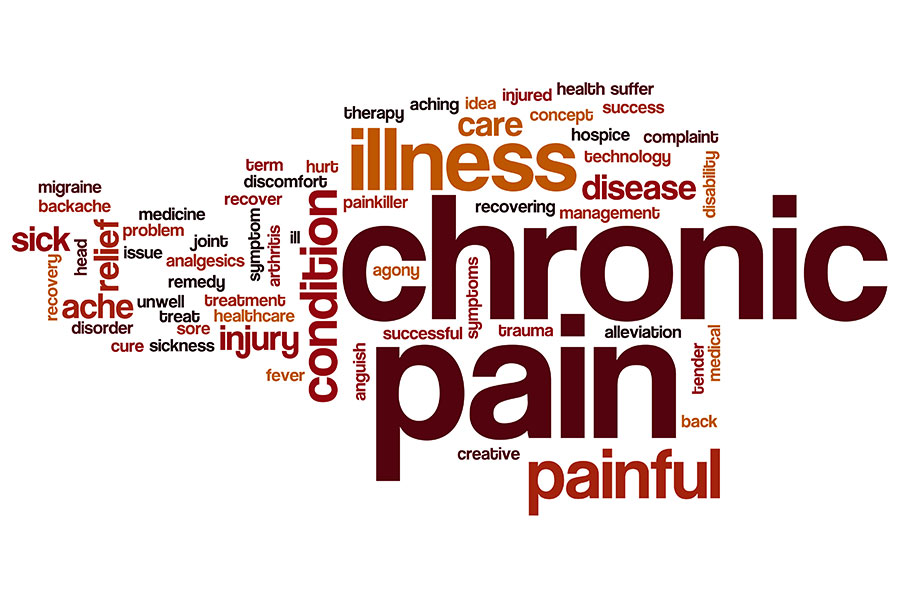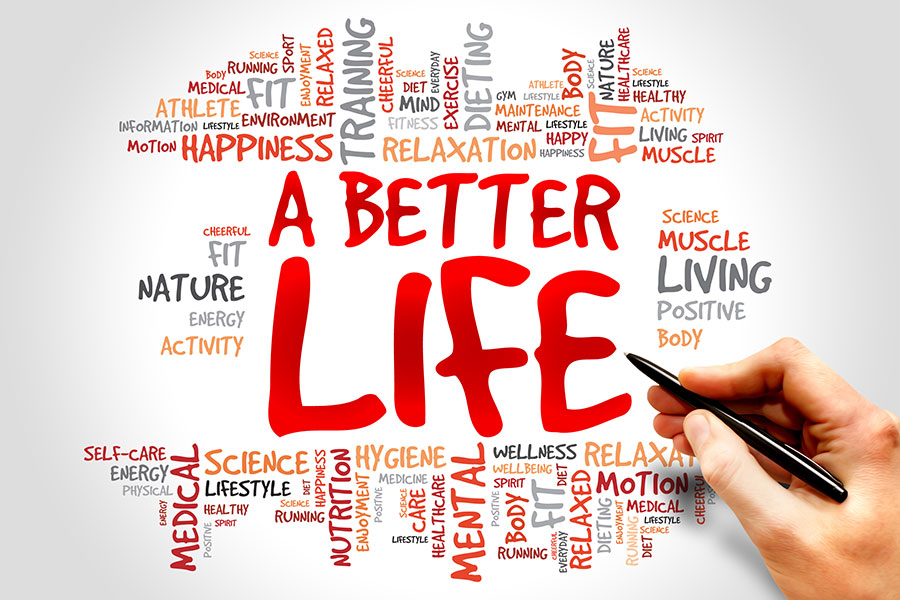Have you ever walked out of a medical appointment feeling like you have more questions than when you went in? Maybe the appointment felt rushed, and you still have things you want to discuss. Or, you walk out feeling like you have been overloaded with too much information and you don’t even know where to begin.
You are not the only one feeling like this. Many people would rather google their symptoms and treatment, because they are getting inadequate information from the person treating them. This is where pain education comes in. It is such an important part of any treatment and can greatly influence your improvement. At Well Health Pro, we take that very seriously.
What exactly is pain education?
The concept of educating people about pain was developed due to the enormous amount of people that struggle with pain worldwide. It has been estimated that about 7.5% of the global population has lower back pain at some point in the year. That is about 577 million people! Now, you can imagine that the numbers would be even higher if we took other types of pain into account as well. These numbers are cause for significant global public health concern, because pain is also the leading cause for global disability. That means that pain is the biggest reason for people to take time off from work, exercise and daily activities. It disables people to do the things they want. This puts a heavy strain on medical systems and economies worldwide.
With time, it was found that pain cannot only be treated by things like medication and surgery. It showed that people responded a lot better to their treatment if they understood their pain and where it came from. That is why pain education was established as a form of treatment. It is also called therapeutic neuroscience education (TNE) or pain neuroscience education (PNE).
Pain education consists of the following:
- Information about the pathology of your condition and the healing process
- Discussion of treatment options and a timeline of how long recovery could take
- Teaching you to rethink the way you view your pain experience
- Education about misconceptions you might have about your pain
- Addressing concerns or answering questions
- Guidance about lifestyle and movement modifications
- The use of questionnaires to get your objective viewpoint
Why we use pain education
As physiotherapists, we look at a patient holistically. We make use of the biopsychosocial concept when treating a patient.
- Bio: This is the biological or physiological part of your problem. The specific muscle, nerve or joint that has been injured and the pathophysiology behind it.
- Psycho: As the name suggests, this is the psychological and emotional part of your problem. This includes any fears or concerns you have about your injury. Any type of injury will affect your mood, making you feel frustrated, angry, worried or depressed.
- Social: Here, we look at how your injury affects you on a social level. This includes your work, your exercise routine and even your social relationships.
Together, these things give a bigger picture of your problem and help us to understand your pain. Using this concept during treatment gives us the ability to give pain education that is applicable to your situation and needs. So, pain education can be personalised for each patient.
I’ll probably only need pain education if I have really complex, chronic pain…
The beauty of pain education is that it can be used for any kind of injury, whether it is big, small, acute or chronic. Even a simple injury like a muscle strain that heals within a few days can benefit from it. Another important reason why we use it, is that it can prevent a simple, small injury from becoming chronic and complex.
Let’s look at two different scenarios as an example:
- Pete sprained his ankle two days ago and makes an appointment with his physiotherapist to look at it. He isn’t too worried, but he wants to play soccer again, and would feel safer knowing how to manage it going forward. His physio does a few tests and determines it is a Grade I ankle sprain, without any further ligament or muscle tears. Together, they discuss the the injury and how long it will take to get better. They decide it is best to work through a rehabilitation plan over the course of a few weeks. Pete feels relieved and knows he will be able to fully play soccer again, it will simply take a bit of time for his body to heal.
- Freddy sprained his ankle two days ago and is becoming increasingly worried about his injury. He googled his symptoms and on the internet it said that he should rest completely with his foot up in the air. His mom hurt her ankle a year ago and she had to have ankle surgery in the end. Freddy desperately wants to avoid having the same surgery, so he binds his ankle up tightly and doesn’t move it at all. He starts working from home instead and doesn’t walk, drive or exercise. A few weeks down the line his ankle still feels extremely stiff and now it is really sore when he walks. He keeps on wondering if he should go for x-rays and a scan. And maybe he will need surgery after all…
If Freddy got the help he needed from the start, his recovery process could have been very different. He had no one to determine the severity of his injury or to explain it to him. If he did, he might have understood that his injury is not very severe and can recover fully. Someone could even have addressed his fears about needing surgery. Without pain education, Freddy still has pain weeks after a simple injury.
This shows you the importance of pain education and how it can make a big difference if you address your problem sooner rather than later. It is also important to have pain education integrated into thorough treatment that looks at your injury holistically, from a biopsychosocial angle.
Effects of pain education
- Reduces pain and disability
- Increase pain thresholds with movement or exercise
- Decrease fear related to movement
- Change brain activity in brain regions associated with pain
- Adresses psychosocial problems
- Improves knowledge of pain mechanisms
- Facilitating safe movement
- Encourages self-efficacy
- Easier to return to work and sport
- Decreases the need for further healthcare (medication, surgery etc.)
- Improves quality of life
” A large number of high-quality studies have shown that teaching people with pain more about the neuroscience of their pain produces very impressive immediate and long-term changes”
How will pain education be used in my session?
It all starts with an evaluation, centered around your specific problem. Your physiotherapist needs to understand where your pain is coming from, how you manage it and how it is affecting your lifestyle. It is also important to discuss your beliefs about the causes or consequences of your pain. This way, we can incorporate pain education that is tailored to your problem. For it to be effective, it needs to be something you understand and that you find applicable.
After the initial evaluation, your physio will discuss your diagnosis, healing time and treatment plan with you. This is the start of pain education, because it is the first step towards undertanding your pain. You can think of it as a discussion, something you can actively engage in. It is supposed to be a safe space for you, where you can ask questions and talk about concerns you might have.
This discussion continues on in each treatment session and will cover different topics, like lifestyle changes, goal setting etc. Pain education happens continuously throughout your appointment, in conjunction with other treatment techniques. It might be small bits of information given throughout your session or could be an active conversation of a few minutes or longer.
Different ways of giving pain education:
- Pictures or drawings
- Videos
- Examples and analogies
- Booklets that you can take home
- Stories
- Apps and websites
- Workbooks with assignments
- Questionnaires
- Group information sessions
Some people respond better to visual information and others better to something they can read. Some people respond well to in-depth information about their condition, others feel overwhelmed by too much information. That is why pain education is so versatile, because it can be used in any of these situations.
Who do we need to educate?
Sometimes, it is necessary to educate people around you, to help with changes you might have to make to your lifestyle or routine. This can include your coach, your family, your friends, your trainer or people working with you. We can write a letter with recommendations, send an information leaflet or even do a group session where we include family members.
Regardless in which way you get your pain education, it should aim to improve your knowledge, help you make sense of your pain and guide you towards effective, ongoing self-management.
The positive effects of pain education and understanding your pain
Feeling better for longer
Educated patients have better results, fewer complications, require less appointments with a doctor and often need less medication and scans. Understanding your condition gives you the confidence to manage your pain, making you less dependant on treatment.
Safety
Knowing what type of pain pain youre dealing with, will help you know what is safe to do and what not. Often patients say: “I’m not sure if I’m making it worse”. That can be confusing and overwhelming. Certain types of pain, like severe inflammation or nerve pain might respond better with resting. However, other conditions, like a muscle spasm or a stiff joint, responds well to healthy movement.
Planning ahead
Pain education helps you to know and plan for a recovery timeframe. You’ll feel less frustrated, if you know you’re dealing with an injury that typically takes a longer time to recover. Or, that it is normal to feel what you are feeling at certain stages through your recovery. With chronic pain, we need a different mindset. Because you are not recovering from a specific injury, you have to have a management plan instead of a recovery plan. Giving you the tools to manage your symptoms the best you can.
Reaching your goals
There should always be a plan to improve throughout your treatment. A good way to do that, is by setting goals. Part of pain education is setting realistic and reachable goals. Both short- and long-term goals. When you reach a goal, you feel efficient and you know you’ve made progress. It will even motivate you to do more and to progress further.
At Well Health Pro, we can help you with setting achievable goals, making sure you are not setting yourself up for failure.
The negative effects of not knowing what you are dealing with
Fear avoidance
When you’re in pain, it’s easy to become fearful of doing certain things. Fearful of bending, walking, exercising, gardening, working or even socialising. With time, it’s easier to avoid these things alltogether. You become stuck in a vicious cycle of doing less and feeling worse.
Compensation
Without you even knowing, your body falls into bad habbits when you’re in pain. An example of this is when you walk with a limp. Initially, it might be because you’re in too much pain to walk properly. But with time, it becomes a habbit that people find hard to change. Without the right guidance to improve your walking pattern, your body starts to compensate for this new habbit. The wrong muscle groups will be working and often leads to more pain and problems.
Overuse
If you don’t know what kind of pain or injury you are dealing with, you won’t know when it is safe to move or exercise again. Exercise can make you feel good on one hand, but on the other hand, it can cause your pain to come back with a vengeance. By simply pushing through pain all the time, you can re-injure yourself or even worsen the injury.
Poor management
Managing your pain with medication or repeated cortisone injections isn’t good for your health in the long term, nor is it solving your problem. Without understanding your pain, you simply numb it with medication and that is a temporary effect.
How many times should I get pain education and how long will it take?
Pain education can start in your first session, however it works best if it can be used repeatedly in each of your follow-up sessions. You might feel overloaded with information, especially after your first session, but as your treatment continues you’ll develop a deeper understanding. This process is different for each patient.
A treatment session might include lots of tidbits of information or a longer sit-down information session. It is incorporated into your whole treatment (a bit at the beginning, a bit at the end to conclude etc).
Pain education won’t always last for a certain amount of time. It could take a few minutes or much longer, depending on how many questions you might have. Your physiotherapist will evaluate how much information you need, according to your responses. If there isn’t enough time in your session to get to all the discussion points, your physio could even guide you to read up about the topic and continue the discussion in the next session.
What can I do to make sure my pain education is effective?
Pain education is supposed to be a continuing discussion. Don’t just think of it as getting one-sided advice, it is a discussion between two people.
- If you dont understand, ask questions
- If you don’t agree, discuss this with your physiotherapist
- If you’ve heard or read of different opinions, tell your physiotherapist about it
- You can go home, think about the education, and come back with more questions
- You can decide if you want to follow the advice given to you
Ultimately, you are responsible for your pain and we want to empower you to manage it to the best of your abilities. Even if you choose to not use the advice we give you, we won’t stop providing care. It might affect your treatment, but we can adapt to it.
Cost of pain education
There are certain medical aid rates for pain education, but they are always used as part of a complete treatment consultation. So, you will never be paying for only pain education.
This treatment in isolation will not fix your problem. It’s the complete treatment package that shows the real improvement.
Medical Aid Code – 708
The medical aid code 708 stands for physiotherapeutic counselling. Pain education is part of counselling and is something that happens throughout your session. It could be bits of information given at appropriate times or it could be a longer discussion.
Most good medical aids offer re-imbursement for this as part of your treatment.
Does it make a difference to have an experienced physiotherapist give me advice?
The experience and skill of your physio makes all the difference when it comes to pain education. These days, you’ll find a lot of information available at your fingertips, but it can be conflicting. A doctor might say one thing, your physiotherapist something else and google something else. An experienced physiotherapist knows what works and can discuss the pro’s and cons between the different sources of information. Remember that google is giving advice in general and doesn’t know your personal problem.
Our physiotherapists have years of clinical experience and in depth knowledge of communication skills and pain education. You need someone that wants to understand your problem. Someone that will support you and make you feel heard. Our physios also have the knowledge of a broad spectrum of different painful conditions and injuries and will know what kind of information is applicable to your condition. That is something that comes with time and we strive to be open to learning more each day.
Questions about pain education:






